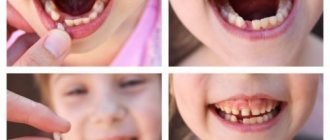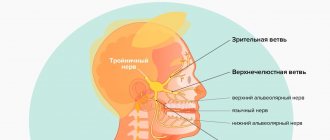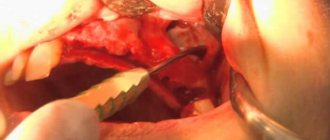26.11.2019
Ultracaine and lidocaine are two of the most discussed drugs for local anesthesia. They are almost always opposed to each other. But opinions about which anesthetic is better are diametrically opposed. Some consider lidocaine to be an effective, reliable and time-tested drug, while others consider it an outdated remedy that has no place in everyday practice. Ultracaine also has not earned an unambiguous positive assessment: rave reviews about the effectiveness of anesthesia are diluted by numerous complaints about side effects.
Research shows that, all other things being equal, the analgesic effect of ultracaine is stronger and toxicity is lower. However, this does not mean that lidocaine should be completely written off. With the right choice of anesthesia technique, it can achieve good analgesia and avoid side effects. On the other hand, errors in determining indications and errors in the technique of medical manipulation can negate all the objective advantages of ultracaine.
For local anesthesia during pregnancy, it is better to use Ultracaine D (without adrenaline), since the safety of lidocaine in this case has not been convincingly proven.
The only case when you should abandon lidocaine in favor of ultracaine is during anesthesia during pregnancy. Both drugs enter the peripheral blood and are able to penetrate the placental barrier. However, ultracaine is metabolized much faster and therefore has much less effect on the fetus.
Compound similarities
For inflammatory diseases, injuries and other situations when it is necessary to relieve pain, anesthetics help solve the problem. Experts advise carefully choosing painkillers, focusing on the purpose of use and the individual characteristics of the body.
In case of exacerbation of diseases, during dental treatment and during simple surgical procedures, it is necessary to use painkillers Ultracaine or Lidocaine.
Ultracaine and Lidocaine are amide anesthetics. They are produced in the form of injection solutions. In the production of both anesthetics, the same excipient is used - water. These drugs have a similar effect on the body, reducing the speed of transmission of nerve impulses, causing tissue numbness.
Both drugs are used for local, regional and infiltration anesthesia.
This is where the similarities end. Despite the fact that the drugs have the same areas of application and solve the same problems, they are quite different. In some cases, it is impossible to replace one remedy with another.
Reviews from doctors
Grigory, 33 years old, dentist, Nizhny Novgorod: “Over several years of medical practice, I have become convinced of the effectiveness of Ultracain, if all the individual characteristics of the patient and the problem that brought him to the dental office are taken into account. There were a couple of cases with side effects, but everything ended well.”
Tatyana A., 43 years old, neurologist, Minusinsk: “I use lidocaine at the request of patients, and when I doubt the choice of remedy, although such problems are rare.”
Differences
Ultracaine and Lidocaine are medications with different active ingredients. Ultracaine is a drug that contains articaine. This substance is quite effective in blocking pain, but has low toxicity. Ultracaine can be used even during pregnancy. Research results have shown that the product does not have a toxic effect on the fetus.
Lidocaine is used in dentistry for tooth extraction, for the treatment of carious cavities, and for pain relief during dental prosthetics. In gynecology, the drug is used for lumbar anesthesia.
Lidocaine contains lidocaine hydrochloride. This substance effectively relieves pain, but even if the dosage is slightly exceeded, it is toxic. There are also differences in the duration of action of the drugs.
Features of the chemical structure of ultracaine
In solution, the anesthetic interacts with water molecules and transforms into an active ionized form, shifting the acid-base balance to the alkaline side. In an acidic environment, a neutralization reaction occurs as a result of which the amide bond is destroyed and the anesthetic becomes inactive. Human tissue fluid normally has a slightly acidic environment, but in the area of inflammation the acidity increases. Therefore, inflamed tissues are less pain relieved.
In addition to the amide group, which connects the lipophilic and hydrophilic parts, the articaine molecule (the active ingredient of ultracaine) contains a more reactive ester group. In the acidic environment of tissue fluid, it undergoes hydrolysis first of all, ensuring the preservation of amide groups, therefore, in general, the effect of ultracaine in comparison with lidocaine is longer.
Which is better Ultracaine or Lidocaine
Ultracaine is considered a more modern anesthetic. The advantages of its use include:
- high degree of pain relief;
- low toxicity;
- rapid onset of analgesic effect.
Ultracaine is recommended for use for epidural anesthesia, as well as when necessary for pain relief during pregnancy. It is much less toxic, although both drugs tend to penetrate the placental barrier.
Ultracaine penetrates deeper into tissues. It is less susceptible to destruction under the influence of an acidic environment.
Differences in the action of Lidocaine and Ultracaine appear when infiltration anesthesia is carried out in full. In this case, the drug is injected directly into the area that needs to be numbed. Ultracaine penetrates deeper into tissues. It is less susceptible to destruction under the influence of an acidic environment. This matters when there is inflammation. In dentistry, if there is inflammation on the gums, Lidocaine may be weak, so it is better to opt for a more modern anesthetic.
Which is stronger
The analgesic effect of Ultracaine is approximately 2 times higher compared to the relatively outdated Lidocaine. When using it, the time spent visiting the doctor is reduced, since it begins to act within 3-5 minutes after the injection. With conduction anesthesia, when the drug is injected directly into the nerve, the drugs differ slightly in their strength.
Mechanism of action of amide series local anesthetics
The spread of a pain impulse in a nerve fiber occurs due to a change in the polarity of the cell membrane. The change in potential is ensured by the work of special membrane protein complexes, sodium and potassium channels. The former are responsible for the excitation and spread of the sensitive impulse, the latter – for restoring the original balance.
The local anesthetic molecule consists of fat-soluble and water-soluble fragments, which are linked by an amide bond. The lipophilic aromatic ring allows the anesthetic to penetrate deep into the cell membrane of the nerve fiber, and the hydrophilic group acts from the inside, blocking the activity of sodium channels. Sodium transport does not occur across the cell membrane, so the pain impulse is blocked.
Contraindications for the use of Ultracaine and Lidocaine
Despite the reduced toxicity, Ultracaine has contraindications. Absolute restrictions include:
- hypoxia;
- glaucoma;
- intolerance to anesthetic components;
- cardiac tachycardia;
- anemia (lack of vitamin B12).
Relative contraindications include heart problems, bronchial asthma, and diabetes. In these cases, the use of Ultracaine is possible, but it must be justified, and the anesthetic should be used only under the supervision of a specialist. This type of pain relief is permitted during breastfeeding and pregnancy.
Lidocaine is not prohibited for children, but it can only be used from 12 years of age.
Lidocaine also has contraindications for use:
- severe cardiovascular diseases;
- tachycardia;
- state of shock;
- bradycardia;
- increased sensitivity to amide anesthetics;
- severe liver dysfunction.
Lidocaine is not prohibited for children, but it can only be used from 12 years of age. Lidocaine can be prescribed to pregnant women only if there are vital indications for anesthesia and it is impossible to replace it with a safer drug.
Lidocaine is not recommended for use for arrhythmia, but this contraindication is relative. Elderly people should use this anesthetic with caution.
Characteristics of Lidocaine
The components of the product block nerve fibers and endings, inhibiting nerve conduction. The drug has a quick effect and long-lasting effect, which is 75 minutes. After administration of the substance, vasodilation occurs, but there are no signs of irritation. Injections can increase membrane permeability to potassium and close sodium channels.
When the drug is used for intramuscular administration, its high content is observed after 5-10 minutes.
The active ingredient is lidocaine hydrochloride monohydrate. In addition, the drug contains water, caustic soda and sodium chloride.
The injection solution can also be used for intravenous administration, including in the form of a dropper. Substances may decompose if exposed to alkaline or slightly alkaline environments. In inflammatory processes, there is a decrease in the effect of the medication, which is used for terminal, infiltration, spinal, epidural and conduction anesthesia.
The drug is widely used in cardiology for the treatment of cardiovascular diseases, which include tachycardia, ventricular arrhythmia and other problems with heart rhythm. Experts use it for anesthesia in the fields of gynecology, dentistry, ophthalmology and otolaryngology.
[morkovin_vg video=”kStHKU6GU4w;uwHgMkD7FEA;GXVd97rwyoM;gaCp2hHF054"]
Side effects of Ultracaine and Lidocaine
When using Ultracaine, the following side effects may occur:
- increased blood pressure;
- respiratory dysfunction;
- nausea;
- vomit;
- darkening and “double vision” in the eyes;
- convulsions;
- swelling;
- redness of the mucous membranes.
Allergies to anesthetics are common. If the drug is being administered for the first time, you must first conduct a test.
The doctor injects the patient with a small amount of anesthetic and only after assessing the result can the dosage be increased.
To conduct an express allergy test, the drug can be applied to the skin or mucous membranes and the reaction can be checked after 5 minutes.
When using Lidocaine, side effects may occur such as:
- breathing problems;
- nausea and vomiting;
- convulsions;
- allergic skin reactions;
- numbness of the tongue (when used in dentistry);
- loss of consciousness.
- involuntary urination.
Severe side effects often occur when the recommended dosage is exceeded. When using Lidocaine, the dose of the drug must be calculated more accurately. After using this anesthetic, a slight loss of visual acuity may occur. After a few hours everything returns to normal.
Immediately after treatment with Lidocaine, it is not recommended to drive a vehicle or perform work that requires increased attention.
If severe side effects occur, the anesthetic should be discontinued. It is necessary to provide additional air flow into the room and monitor the patient’s pulse and blood pressure.
How to use
Lidocaine is produced in the form of solutions of different concentrations, poured into ampoules, and spray. For dental procedures that do not require long-term anesthesia, as well as diagnostic procedures, when cutting the perineum during childbirth, removing sutures, treating wounds, the spray is applied to the area that needs to be numbed.
The product should be sprayed from a short distance, avoiding particles getting into the respiratory tract and eyes. If the surface to be treated is large enough, you can spray lidocaine onto a cotton swab and wipe the skin with it.
Lidocaine solution 2% is intended for subcutaneous or intramuscular administration. The dosage is selected individually in each case. In dentistry, 1-2 ml of solution is administered once. If long-term anesthesia is required, the dose of the drug may be increased.
Lidocaine solution 2% is also used in ophthalmology. The drug is instilled into the conjunctival sac. This procedure must be carried out under the supervision of a physician. Lidocaine 10% is used in the form of applications or intramuscularly (to relieve arrhythmic attacks).
Ultracaine is produced in the form of a solution, packaged in ampoules of 1.7 and 2.0 ml. The drug must be administered subcutaneously to ensure high-quality anesthesia. The dosage in each case is calculated individually. For local anesthesia, you can soak a cotton swab in the solution and wipe the skin or mucous membranes with it.
Scope of application
The usual use of Ultracain is in dentistry for depulping teeth, removing them and other manipulations. The anesthetic penetrates well into bone structures and anesthetizes inflamed tissue. Due to this, Ultracain D-S is preferred when performing operations on ENT organs (removing tonsils, correcting a deviated nasal septum, etc.).
Lidocaine is used much more widely. In addition to pain relief, it is an antiarrhythmic drug that is used in cardiology. In addition, the drug is administered intravenously to relieve acute surgical and chronic pain; used in general anesthesia in combination with propofol. Lidocaine is convenient for superficial anesthesia during gastroscopy and other endoscopic examination methods. And, of course, it is still used as a local anesthetic in otolaryngology and dentistry.
Conditions for dispensing from pharmacies
Lidocaine and Ultracaine are available from pharmacies with a doctor's prescription. Lidocaine spray is available without a prescription.
Price
Lidocaine is cheaper than Ultracaine, and the price difference is quite large. A pack of 10 Ultracain ampoules can be purchased at a pharmacy for 1100-1300 rubles. A similar package with Lidocaine ampoules costs 40-50 rubles. The average price of Lidocaine in the form of a spray is 200-250 rubles.
Several types of Ultracaine can be purchased in pharmacies. Varieties that are designed specifically for allergy sufferers are higher than classic Ultracaine.







